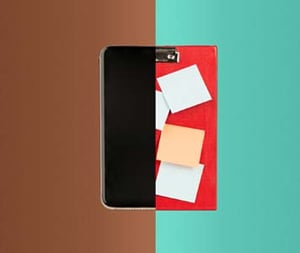Will i get a patent if I make something in an alternative way? | EP&C
 "I can make that too, only better!" Do you ever think that? For example, about a utensil or the way something is made. Why not give it a go? You can obtain a patent simply by making a product in a novel and alternative way. One important detail: you will not be able to patent the actual product itself in that case. In this blog, I explain exactly how it works.
"I can make that too, only better!" Do you ever think that? For example, about a utensil or the way something is made. Why not give it a go? You can obtain a patent simply by making a product in a novel and alternative way. One important detail: you will not be able to patent the actual product itself in that case. In this blog, I explain exactly how it works.
Sticky lasagne
I am a chemist and because cooking involves lots of chemical processes, I will explain it to you using an example that involves cooking. Suppose you like to eat ready-made lasagne. It is quick, does not create any mess in the kitchen and is filling. The only thing you do not like about it is that it is soft and soggy. So you develop a new way of making ready-made lasagne.
You experiment, for example, by first putting the lasagne in the oven at a lower temperature for an extended period of time and then at a higher temperature for a short period of time. You could try using a silicone mould instead of the traditional oven dish. None of the producers of ready-made lasagne make the product in this way. So the process is not only novel but also inventive, which are exactly the criteria you need to meet for a patent. So it is possible to get a patent, while the actual product itself already exists.
No patent on the product
But suppose you come to see me because you want to go a step further. You also want to patent the lasagne. After all, you have now made it in a unique, novel way. Unfortunately, I will have to disappoint you in this case. The product lasagne already exists, so it is not novel and inventive. As long as the product stays the same, it is not possible to obtain a patent on the end product. However, if the actual product itself is also different, in this case somewhat firmer and less sticky for example, while the ingredients remain the same, you may still have a product claim as long as this difference is measurable. For example, the firmness of the lasagne. A claim like this is referred to as a product by process. This means: the product obtained through the process. The fact that you have invented a new process does not automatically mean that you also have a new patentable product. So patent the process! However you should also carefully check whether the product can be included.
Patenting the process also makes sense
Do not be too quick to think that patenting is pointless in that case. Even a small change to an existing product can have major economic consequences. Perhaps even more than a whole new invention. Let me explain it again, this time using an example from chemistry. Think of aspirins. They already exist and are therefore not novel. You can no longer obtain a product patent on them.
Aspirin is quite simple to make: you put the active ingredients into a vat, stir, turn them into aspirin and that's it. However if you find a way to make aspirin that reduces the amount of residual waste and requires less equipment, it is definitely worth applying for a patent on that process. Others will then not be able to use that process without first talking to you about a licence.
In short: It is possible to get a patent if you improve an existing product. Only not on the end product if that remains the same. But even in the case of an improved process, it is worthwhile investigating whether patenting is possible. Don't be too quick to think that it is pointless.
If you are not sure about patenting, please feel free to contact me and I will explain your options to you.
You can also chat with me or one of my colleagues on working days between 2pm and 5pm. If you go to www.epc.nl, the chat function will open automatically. It is also possible to ask questions by e-mail. Our patent attorneys will answer your questions within one working day.

About the author
I studied chemistry in Utrecht and wrote my Ph.D. thesis on organic synthesis. Before joining EP&C as a patent attorney in 2004, I worked at KeyGene, a biotechnology company. I specialize in food and...
More about Robbert-Jan >